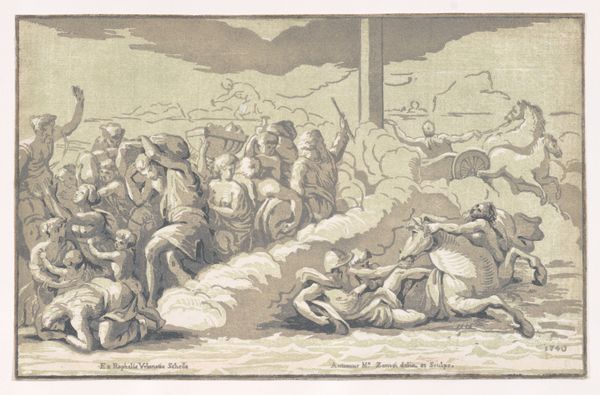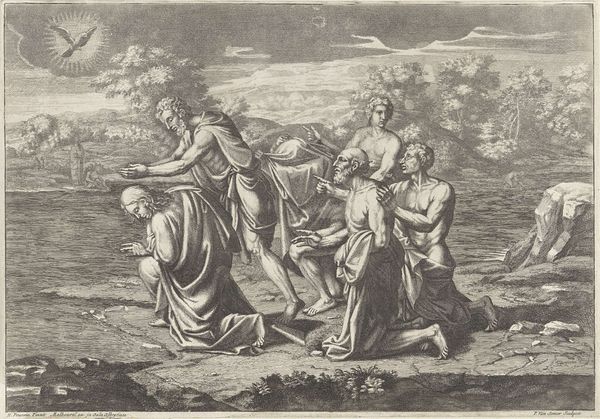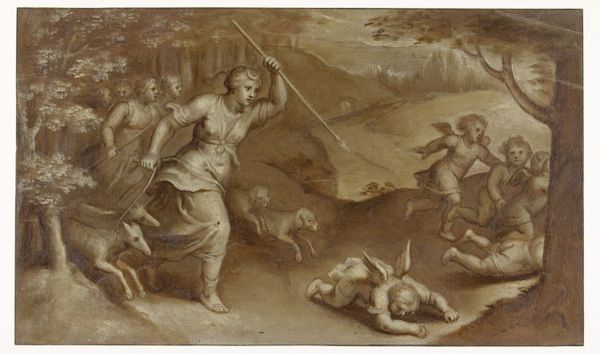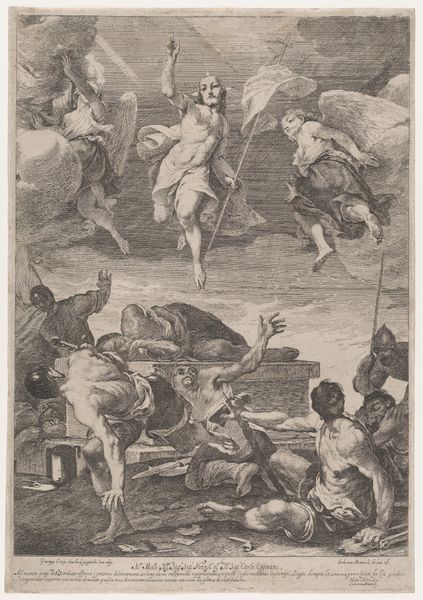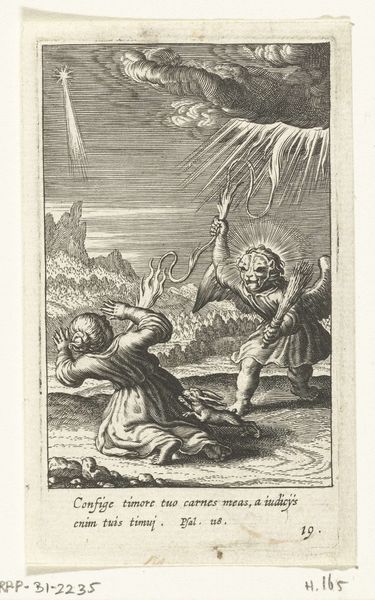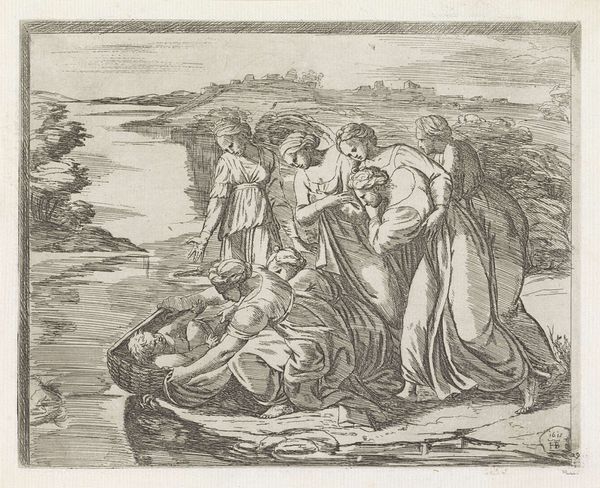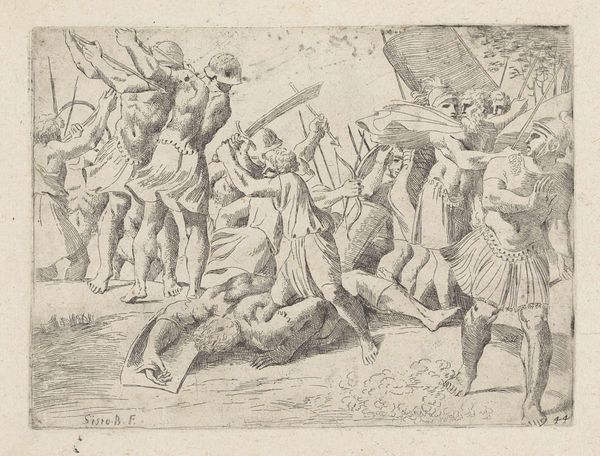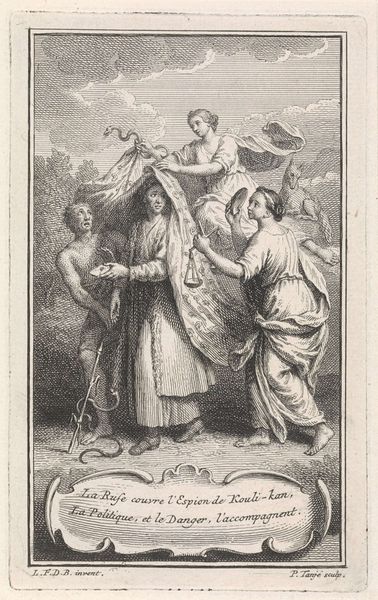
Fotoreproductie van een illustratie van een gezelschap dat uit een boot stapt before 1855
0:00
0:00
drawing, paper, pencil
#
drawing
#
narrative-art
#
pencil sketch
#
landscape
#
charcoal drawing
#
figuration
#
paper
#
pencil drawing
#
pencil
#
academic-art
#
realism
Dimensions: height 30 mm, width 60 mm
Copyright: Rijks Museum: Open Domain
Curator: At first glance, there's a subdued energy about this pencil sketch; a narrative tableau in soft sepia tones, hinting at academic leanings, perhaps, but there's something almost weary about it. Editor: Indeed. This artwork, whose title translates to "Photoreproduction of an Illustration of a Company Leaving a Boat", dates from before 1855. The anonymous artist renders a scene teeming with people unloading from a boat, set against a fairly muted landscape. Looking at it, what sort of narrative implications strike you? Curator: The figures are all draped in cloth, and there's an almost biblical quality. There are suggestions of themes that may have political dimensions. Are these refugees arriving, escaping? There’s one man raising a staff. It feels as if he is in command, or maybe threatened? And the passivity of those still in the boat creates tension, don't you think? What can you tell us about the history of displaying this piece? Editor: The image's reception at the time it was made is hard to pinpoint. I mean, this image itself is a photoreproduction. What was the goal of reproducing it? For scholarly record-keeping, or maybe as part of a larger visual polemic of some kind? Curator: I find it fascinating how contemporary it feels in that respect. Consider the politics of visibility, of reproduction. Is this anonymous representation mirroring the historical silencing of these marginalized communities? We might want to see this pencil sketch as a site for the confluence of a diverse spectrum of narratives relating to issues around political upheaval, forced migration, resilience, and how the relationship to cultural identity intersects with these power dynamics. Editor: The medium of pencil on paper suggests an intimacy, a tentative approach perhaps. If anything, this evokes broader institutional strategies to shape the visual language used in communicating complex social issues to wider audiences and understanding where art functions within these systems. I think what’s interesting, finally, is the potential to spark debate around image-making’s ability to inform and sometimes complicate how the public processes and absorbs social information. Curator: That gives me a new angle on that passive resignation that initially struck me; thank you.
Comments
No comments
Be the first to comment and join the conversation on the ultimate creative platform.

